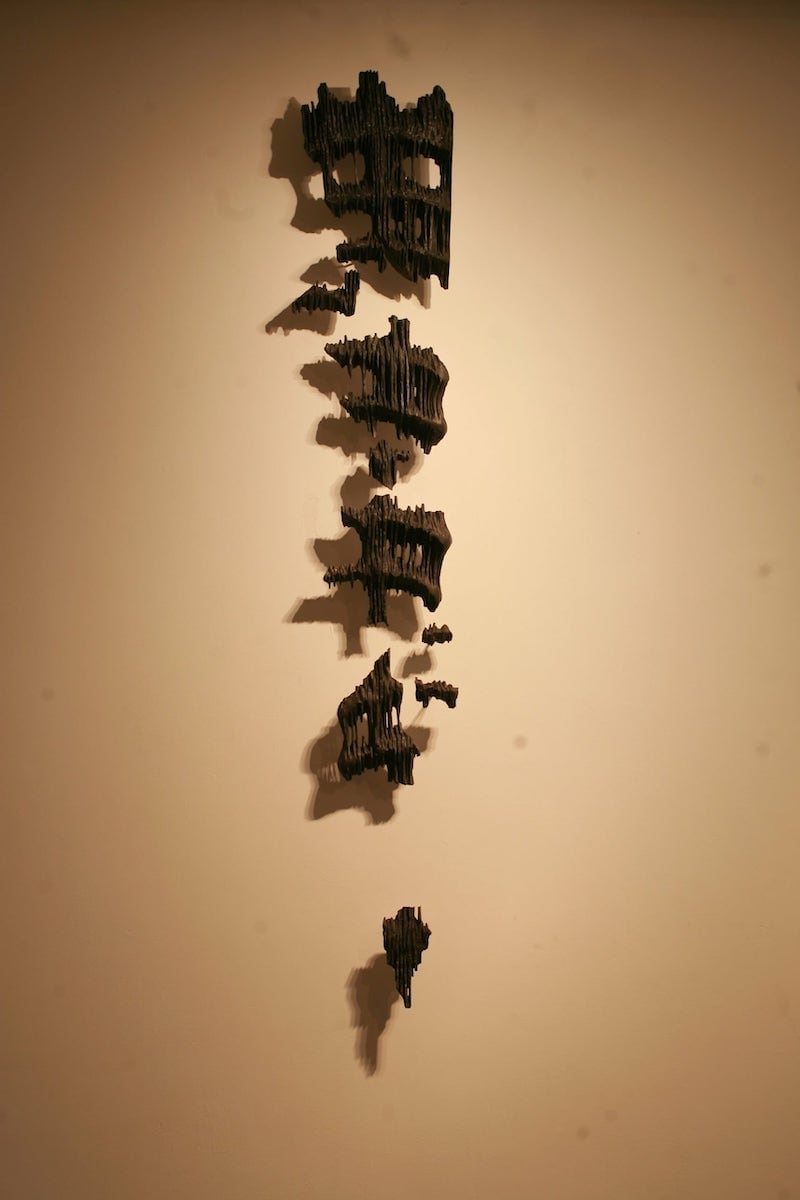Born and raised in Ninh Binh, Luong Trinh left to study in Hanoi before coming back home to live and work. He has been mastering his craft of sculpting for more than 10 years now.
When he first lived in Hanoi, Luong Trinh found inspiration from the architecture in the Old Quarter for his masterpieces. Upon returning to Ninh Binh, however, the temples, pagodas, and natural elements like water, wind, and clouds soon became his muse.

The inspiration he got from the temples of Ninh Binh is what makes his artworks exude an aura of lightness and a somber feel. In crafting his contemplations, he primarily uses blackstone and limestone, chiseling them into simple and contemporary shapes.
Luong Trinh is able to simplify and condense the complexities of each layer of life with elegance. His minimalism leaves the audience to perceive life in its most natural forms: through the rough surfaces that resemble mountains, the crests and troughs that represent clouds, or through the smooth, polished surface of rock.
Before you start sculpting, what do you do to prepare?
I observe the space around me, sense what is in the atmosphere, and I allow the energy to guide my emotions and thoughts.
I also cultivate and collect documents and folktales on these temples, and add to the ideas I’d read about with my personal thoughts.
What do you think is the most important element of a piece: presentation or content?
I value both. An artwork that skillfully combines both the right material and presentation will fully convey the idea behind the piece. Likewise, a good idea will become a compass, guiding us to the appropriate materials and presentation.
To me, an idea is the spark for my creative impulses. When I have an idea, I will pursue it; from there, choices on materials and forms of expression will arise.

What geometric form best describes your hometown?
A triangle, since it depicts the strength of our mountains. But Ninh Binh has always reminded me of wavy curves because our most famous geographic feature is the layers and ripples of rocky mountains: gentle and stable.

Does your initial idea and the final product always align?
Well, that depends. For the works that I am able to maintain the initial feeling and connection that I had to the idea, then the final product will be very close to what I originally envisioned.
But during the process of composing the sculptures, there are times where my creativity will give birth to new elements. When I allow these ever changing emotions to guide my process, there are no limits to how much the original idea will change.

Are there pieces that you’d never want to see again?
Not at all. I value everything I create. I keep all my sketches and unfinished works. If a sculpture doesn’t turn out the way I want, it becomes a learning opportunity for my future works.

Which artwork of yours reflects the most pressing challenges of our time?
I think whether intentionally or not, every work of art that is composed has with it a story—not only its own story, but also that of society’s.
With my works, I want to convey the different religious views in society, how they exist and morph over the flow of time.

In your works, spiritual symbols seem to play an important role. Where does this stem from?
Of course. When we step into a temple or a church, the architecture, statues, and drawings, help us feel the spiritual energy.
Art is heavily influenced by religion, and religion uses art to guide people. In religious art, different parts of the world will have different forms of expression—albeit under the same religion.
That difference may stem from an aesthetic concept, or from the distinction in levels of social development. But, in general, they all carry a similar spirit and ethereal energy.
It is true that the subject of spirituality occupies a large part of my compositions. It all originates from a question and a desire to find an answer to the question: “Is the spiritual world a product of the human imagination, or is the human world created by the Gods?”
In my artworks, the architecture of holy places like pagodas, temples, and towers not only exist in tangible form, but they also hold an invisible energy flow, like a spiritual aura. Some of my creations involving the human form also portray a merge between the human and godlike features.

Translated by Dieu Linh
The Factory Contemporary Art Center (The Factory) is the first art center in Vietnam to operate independently exclusively for contemporary art. Operating under the model of a social enterprise, The Factory focuses on interdisciplinary cultural activities to introduce and improve knowledge of contemporary art in Vietnam.
Address: The Factory Contemporary Art Center, 15 Nguyen U Di, Thao Dien Ward, District 2, Ho Chi Minh City
Contact information: art@factoryartscentre.com | +84 (0)28 3744 2589

